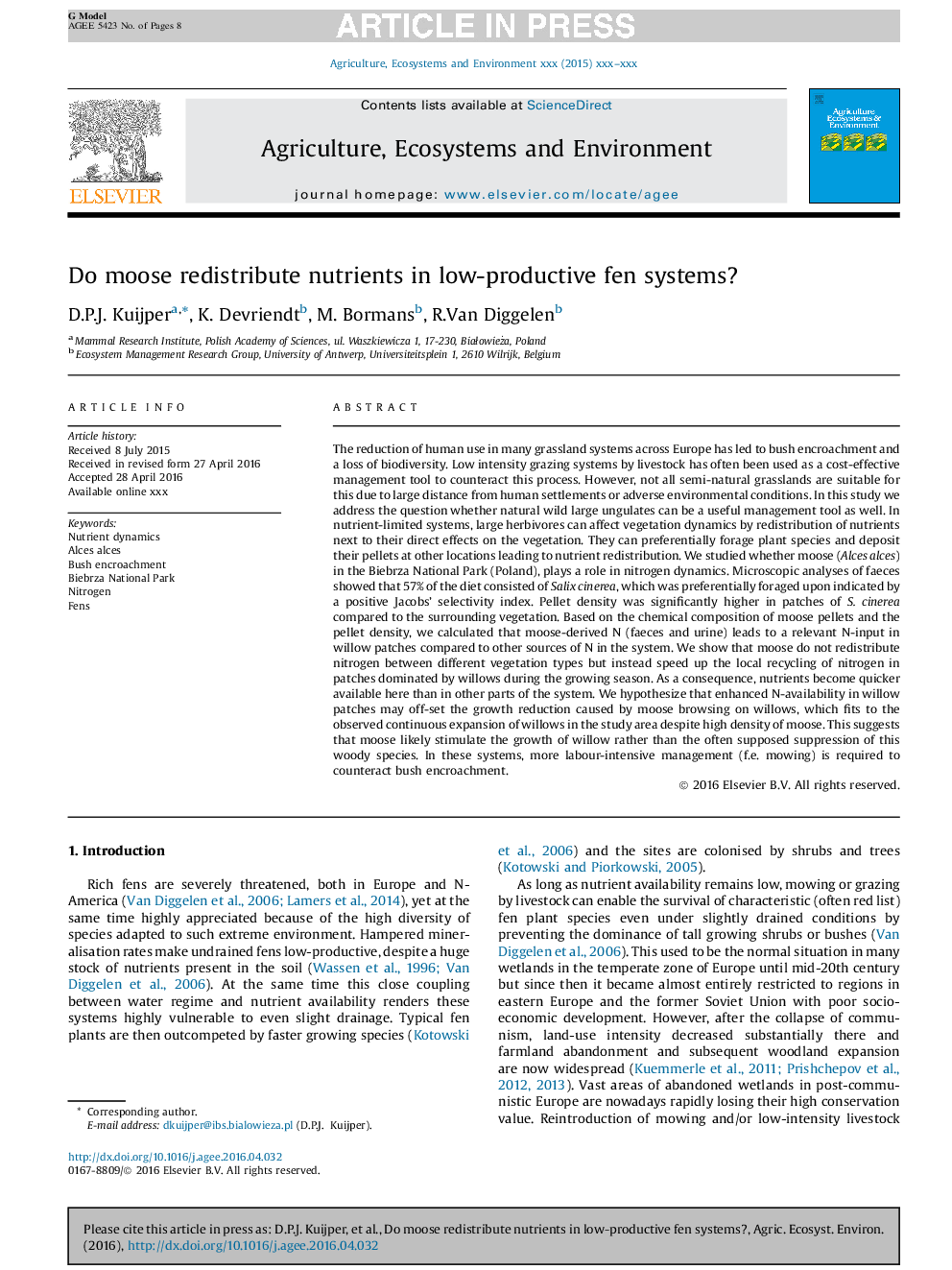| Article ID | Journal | Published Year | Pages | File Type |
|---|---|---|---|---|
| 5538121 | Agriculture, Ecosystems & Environment | 2016 | 8 Pages |
Abstract
The reduction of human use in many grassland systems across Europe has led to bush encroachment and a loss of biodiversity. Low intensity grazing systems by livestock has often been used as a cost-effective management tool to counteract this process. However, not all semi-natural grasslands are suitable for this due to large distance from human settlements or adverse environmental conditions. In this study we address the question whether natural wild large ungulates can be a useful management tool as well. In nutrient-limited systems, large herbivores can affect vegetation dynamics by redistribution of nutrients next to their direct effects on the vegetation. They can preferentially forage plant species and deposit their pellets at other locations leading to nutrient redistribution. We studied whether moose (Alces alces) in the Biebrza National Park (Poland), plays a role in nitrogen dynamics. Microscopic analyses of faeces showed that 57% of the diet consisted of Salix cinerea, which was preferentially foraged upon indicated by a positive Jacobs' selectivity index. Pellet density was significantly higher in patches of S. cinerea compared to the surrounding vegetation. Based on the chemical composition of moose pellets and the pellet density, we calculated that moose-derived N (faeces and urine) leads to a relevant N-input in willow patches compared to other sources of N in the system. We show that moose do not redistribute nitrogen between different vegetation types but instead speed up the local recycling of nitrogen in patches dominated by willows during the growing season. As a consequence, nutrients become quicker available here than in other parts of the system. We hypothesize that enhanced N-availability in willow patches may off-set the growth reduction caused by moose browsing on willows, which fits to the observed continuous expansion of willows in the study area despite high density of moose. This suggests that moose likely stimulate the growth of willow rather than the often supposed suppression of this woody species. In these systems, more labour-intensive management (f.e. mowing) is required to counteract bush encroachment.
Related Topics
Life Sciences
Agricultural and Biological Sciences
Agronomy and Crop Science
Authors
D.P.J. Kuijper, K. Devriendt, M. Bormans, R.Van Diggelen,
